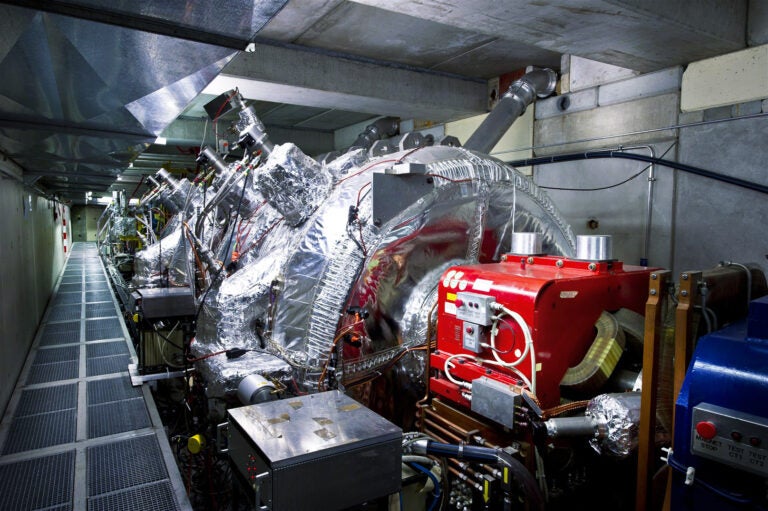| What’s a grism? |
| A grism is a prism with a series of fine grooves cut into one surface that disperses light into a spectrum. The grooves force the spectrum to emerge from the prism at an exact angle. Without these grooves, the light must be passed through a small slit for the spectrum to be measured. Hubble’s ACS grism lets astronomers take spectra of thousands of objects in a single image. |
Ultra Deep Field (HUDF). Her project, called the Grism ACS Program for Extragalactic Science (GRAPES), imaged the region for 40 orbits in October 2002 and December 2003 using the light-splitting grism on Hubble’s Advanced Camera for Surveys.
One result was a true sounding of the HUDF, including a galaxy with the farthest directly measured redshift (6.7). More intriguing, however, is the fact that the most distant galaxies, near redshift 6, seem to cluster together not only along the line of sight, but in the sky’s plane as well, lying on one side of the HUDF. A wide-field survey from the Cerro Tololo Inter-American Observatory in Chile suggests the HUDF is located at the edge of a wall of galaxies spanning at least 20 million light-years.
Now, Malhotra and her colleagues are chasing down distant structures with another Hubble program to gather spectra. It’s called Probing Evolution And Reionization Spectroscopically — PEARS, for short.
“We have eight more fields planned for grism spectroscopy,” she says. In fact, Hubble began PEARS observations in mid-August. Four of the fields form a line with the HUDF. Each of these flanking fields will be observed for 20 orbits each, and the HUDF itself will be studied for another 40 orbits. Four additional fields are in the northern sky near — and including — the original Hubble Deep Field observed in 1995. “The second field would give entirely independent results about galaxy evolution with redshift,” Malhotra explains.
According to James Rhoads, a PEARS team member, data for the HUDF flanking fields should be complete by mid-November. As long as there are no delays caused by high-priority targets of opportunity, or problems with the spacecraft or its instruments, Hubble should finish the longer HUDF observations the following month.
At the end of August, Hubble’s controllers implemented a scheme that allowed the telescope to operate on two gyros, rather than the normal three. This change is not expected to affect PEARS science, says Rhoads.
“With the HUDF, we have reached redshifts of 6.7, about 800 million years after
the Big Bang,” says Malhotra. “Unfortunately, this is nearly the limit of what we can do with the current instrument on Hubble. Higher redshift galaxies are even redder, and we need infrared instruments to observe them.”
One of the two instruments slated for installation on the next servicing mission is the Wide-Field Planetary Camera 3. “This would allow us to redshift 14, corresponding to 300 million years after the Big Bang,” she says. As astronomers look farther back in time, at some point, the number of galaxies should drop off. She says this would mean astronomers have reached “the dawn of light in the universe” — the reionization epoch, when the Dark Ages ended and the first starlight shone across the cosmos.











